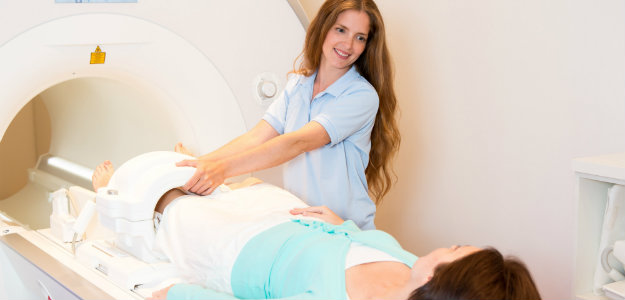The Anterior cruciate ligament (ACL) is one of the most common knee ligaments for people to tear. If your doctor suspects you have an ACL tear, they will likely recommend a knee MRI to diagnose the issue. So you can be a partner in your care, here’s some more information about these tears, their diagnosis, and treatment.
What is an ACL?
Your knee joint is the place where your femur, tibia, and kneecap join together with the support of several ligaments. The ACL is located inside your knee joint, and it makes an “x” with the posterior cruciate ligament.
This ligament stops the tibia from jutting out in front of the femur, and it also stabilizes the knee and prevents unwanted rotation. To get a good look at this area, doctors need to use a knee MRI.
What is an ACL Tear?
An ACL tear is when this ligament tears or gets sprained. With a mild sprain, the ligament is still doing its job, but it has been slightly stretched out of place. A partial tear is a more serious strain where the ACL has been stretched to the point of being loose. A complete tear or a grade three sprain is when the ligament has split or torn into two pieces, and as a result, the knee joint is no longer stable.
What are the Symptoms of an ACL Tear?
Even before doing a knee MRI, your doctor will be able to estimate whether or not you have an ACL tear just by looking at your symptoms. Immediately after an injury, most people experience pain and swelling. This often goes away, but if you continue to be active, further damage can ensue to both the ACL and to the cartilage around your knee.
Many people experience pain while working out or even while just doing simple movements such as walking. If that happens, you need to seek help immediately before the situation gets worse. Finally, a lot of people with torn ACLs lose their full range of motion.
How Does a Knee MRI Diagnose a Torn ACL?
A knee MRI uses magnetic resonance to create an image of what’s happening in your body. In particular, MRIs are effective at creating images of soft tissues like the ACL. Imaging specialists may use an MRI to see swelling and to look for fiber discontinuity. They may also look at the angle of your ACL compared to the optimal angle of this ligament to see how it’s shifted.
By examining the direction of the ligaments apex, they can usually assess the severity of the tear. If the angle appears normal, the imaging specialists can use the knee MRI to look for hyperintense signals that indicate a partial rupture. On top of that, a knee MRI can also show bone contusions, signs of anterior tibial translocation, and a range of other issues.
What is the Treatment for a Torn ACL?
If the knee MRI reveals a torn ACL, your doctor may recommend rest and rehabilitation. In other cases, they may recommend surgery. Typically, surgery involves removing the damaged tendon and replacing it with tendon from a donor or another part of your body.
To learn more about knee MRIs or to schedule an appointment, contact American Health Imaging today. If you’re a physician who needs to set up an appointment for a patient, please also feel free to contact us directly.
